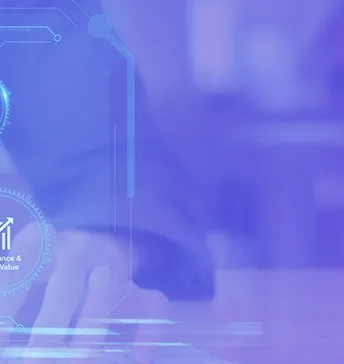In the current threat landscape, organizations face an unceasing barrage of cyberattacks. FBI Director, Christopher Wray, recently stated that state-linked threat groups are ramping up threat activity against the U.S. and pose a continued risk to key critical infrastructure sectors.
Proactive cybersecurity measures are no longer optional – they’re essential for protecting your business and its valuable assets. Cybersecurity maturity models (CMMs) are frameworks that help organizations do just that by assessing their cybersecurity posture and identifying areas for improvement.
What is a Cybersecurity Maturity Model (CMM)?
A cybersecurity maturity model is a tool designed to assess an organization’s cybersecurity capabilities and overall security posture. It outlines different stages of security maturity, allowing organizations to benchmark their current state and outline a path toward improvement.
There are several popular CMMs available, each with its own strengths and target audience. Here are a few popular examples:
NIST Cybersecurity Framework (CSF)
Developed by the National Institute of Standards and Technology (NIST), the CSF is a voluntary framework that provides a set of best practices for managing cybersecurity risk. This CSF framework was recently updated to version 2.0 and introduces more GRC (Governance, Risk, & Compliance) to tie the various functions together.
- NIST SP 800-53: Per Wikipedia, “NIST Special Publication 800-53 is an information security standard that provides a catalog of security and privacy controls for all U.S. federal information systems except those related to national security. Specifically, NIST Special Publication 800-53 covers the steps in the Risk Management Framework that address security control selection for federal information systems in accordance with the security requirements in Federal Information Processing Standard (FIPS) 200. This includes selecting an initial set of baseline security controls based on a FIPS 199 worst-case impact analysis, tailoring the baseline security controls, and supplementing the security controls based on an organizational assessment of risk. The security rules cover 20 areas including access control, incident response, business continuity, and disaster recovery.”
- NIST SP 800-171: Per Nist.gov, “NIST SP 800-171 is a NIST Special Publication that provides recommended requirements for protecting the confidentiality of controlled unclassified information (CUI). Defense contractors must implement the recommended requirements contained in NIST SP 800-171 to demonstrate their provision of adequate security to protect the covered defense information included in their defense contracts, as required by DFARS clause 252.204-7012. If a manufacturer is part of a DoD, General Services Administration (GSA), NASA or other federal or state agencies’ supply chain, the implementation of the security requirements included in NIST SP 800-171 is a must.”
Cybersecurity Maturity Model Certification (CMMC)
Introduced by the U.S. Department of Defense (DoD), CMMC is a mandatory program for defense contractors that defines five maturity levels for cybersecurity practices. Due to its difficulty and complexity, implementation of CMMC may be out of reach for many organizations. A more realistic cybersecurity maturity progression could be regarded as following an evolution from CSF to 53 to 171 to CMMC.
ISO 27001
ISO 27001 is an internationally recognized standard that sets out the requirements for establishing, implementing, maintaining, and continually improving an Information Security Management System (ISMS). In simple terms, it’s a framework that helps businesses of all sizes manage the security of their information assets in a systematic way.
Cobit
COBIT, which stands for Control Objectives for Information and Related Technologies, is a framework developed by ISACA (Information Systems Audit and Control Association) to help organizations govern and manage their information technology. While not specifically focused on cybersecurity, Cobit provides a broader framework that encompasses IT governance, control, and audit. The framework emphasizes the importance of internal controls, which can indirectly contribute to a stronger cybersecurity posture. Additionally, some COBIT processes, such as those related to data security and risk management, can be leveraged to enhance cybersecurity efforts.
Benefits of Using a Cybersecurity Maturity Model
Improved risk management, a stronger overall security posture, and enhanced compliance are just a few of the benefits of implementing a cybersecurity maturity model for your organization.
Improved Risk Management: By identifying vulnerabilities in your security posture, you can prioritize your efforts and allocate resources more effectively to address the most critical risks.
Enhanced Compliance: Many CMMs align with industry standards and regulatory requirements. Using a CMM can help your organization demonstrate compliance and avoid costly penalties.
Increased ROI on Cybersecurity Investments: CMMs help you focus your security spending on areas that will have the most significant impact, maximizing the return on your investment.
Stronger Overall Security Posture: CMMs guide you in building a layered defense with a focus on prevention, detection, and response capabilities.
Improved Communication and Collaboration: By providing a common language for security discussions, CMMs can foster better communication and collaboration across different departments within your organization.
Key Components of a Cybersecurity Maturity Model
Most CMMs share some common core elements:
Framework and Structure: The framework and structure outlines key functions and categories addressed by the model, such as risk management, access control, and incident response.
Maturity Levels: CMMs define different stages of cybersecurity maturity, ranging from basic to advanced. Each level represents a set of security capabilities that an organization should strive to achieve.
Assessment Methodology: The model provides a process for evaluating your organization’s security posture against the defined maturity levels. This can involve self-assessments, questionnaires, or third-party audits.
Level 1 – Partial
Companies in this early stage of cybersecurity maturity often rely on reactive measures. Their security practices might be scattered and lack a central structure. A formal cybersecurity risk management process is crucial at this level to identify, assess, and proactively mitigate threats before they become significant problems.
Level 2 – Risk-informed
This stage signifies a shift towards a risk-informed cybersecurity strategy. You’ve implemented policies and procedures, demonstrating a proactive approach to cyber threats.
Level 3 – Repeatable
Your company has achieved a standardized approach to cybersecurity risk management, meaning that you have established repeatable processes, a robust risk management program, and the ability to effectively detect and respond to cyber threats which translates to a more secure and resilient organization.
Level 4 – Adaptive
This level of cybersecurity maturity reflects a truly proactive posture. Your team has honed security practices, allowing for dynamic adjustments to address ever-evolving threats and challenges, ensuring your organization remains at the forefront of cybersecurity defense.
How to Implement a Cybersecurity Maturity Model
Here’s a basic roadmap for implementing a cybersecurity maturity model:
1. Choose a Relevant CMM: Select a model that aligns with your industry, size, and regulatory requirements.
2. Conduct a Self-Assessment: Evaluate your current security posture against the chosen CMM’s maturity levels.
3. Identify Gaps and Priorities: Based on the self-assessment, identify areas where your security posture falls short and prioritize the most critical improvements.
4. Develop a Security Improvement Plan: Create a plan that outlines the specific actions you will take to address the identified gaps and achieve the desired maturity level.
5. Implement Security Controls: Put your plan into action by implementing necessary security controls and best practices.
6. Continuously Monitor and Improve: Cybersecurity is an ongoing process. Regularly monitor your security posture and adjust your plan as needed.
Conclusion
Cybersecurity maturity models offer a valuable framework for organizations of all sizes to assess and improve their security posture. By leveraging a CMM, you can identify weaknesses, prioritize improvements, and build a robust defense system to protect your organization from cyber threats.
Ready to learn more about specific cybersecurity maturity models or get expert guidance on implementing one for your organization? Contact us today!




















